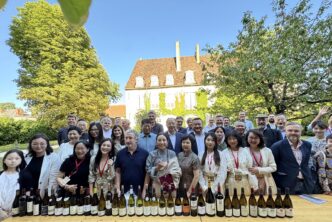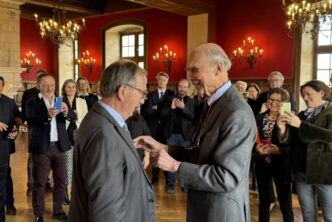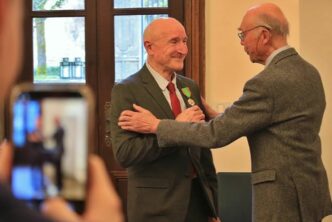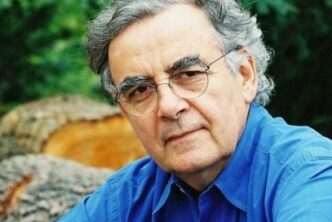Jean-Pierre Dirler, one of Alsace’s viticulture experts and vignerons I admired most, passed away on July 14, 2023, at eighty-three years of age.
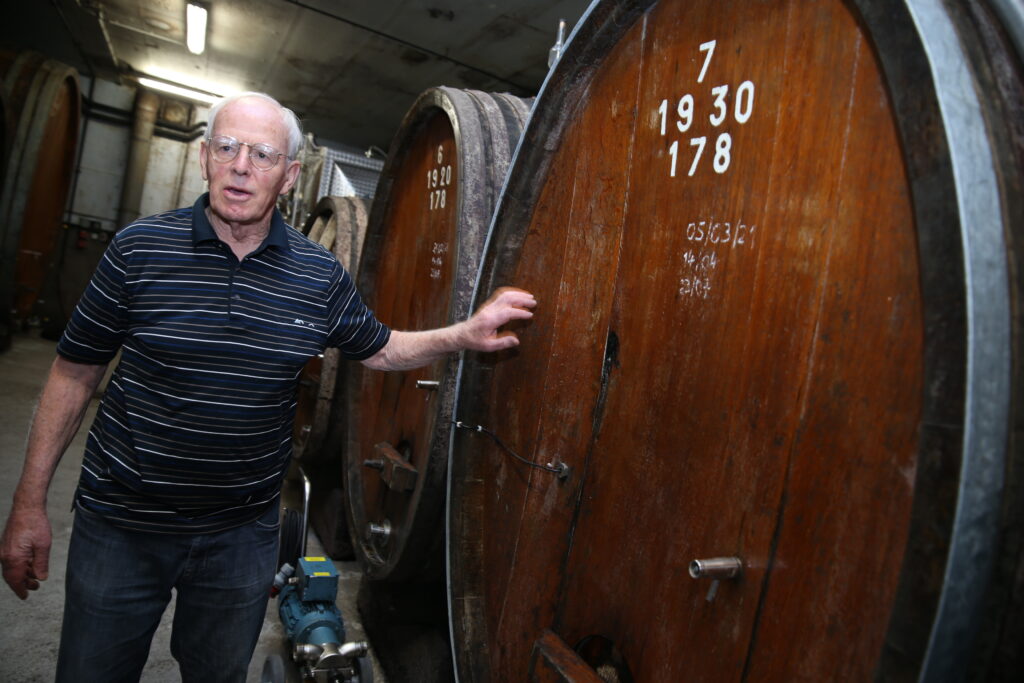
I have been visiting Alsace and its wineries regularly since 2000 (my first trip to the region actually dates back to when I was still in high school, in 1976, a very good year) and have been writing about the wines in professional wine magazines since 2000 or 2001. I don’t remember exactly in which year I first stopped by to drink some wines at Jean-Pierre’s, but I know I have been doing so for very complete and very long wine tastings (practically never fewer than 25 different wines each year, and usually more) that I then reported on, since at least 2009.
There are many things I liked about Jean-Pierre, and that I like about his family. For one, his, and their, extreme kindness and generosity. I realize those are often nothing more than pat phrases people throw around to be kind, but I can assure you I write them here with meaning and deep-rooted belief. Suffice it to say I very rarely accept to dine with vignerons at their house, and never more than once in a blue moon, but I made a very rare exception for Jean-Pierre and his family, gladly seeing them whenever I could. That didn’t happen by accident, or because I had nothing better to do with my time.
Another reason for my admiration was Jean-Pierre’s deep love and respect of the land and of his grape varieties. A traditionalist but with a watchful eye towards innovation, it is not by chance that the Dirler-Cadé estate turned to biodynamic farming already twenty-five (25!) years go. Now think about that for a second: how common do you think it was to do so, anywhere, a quarter of a century ago? Exactly.
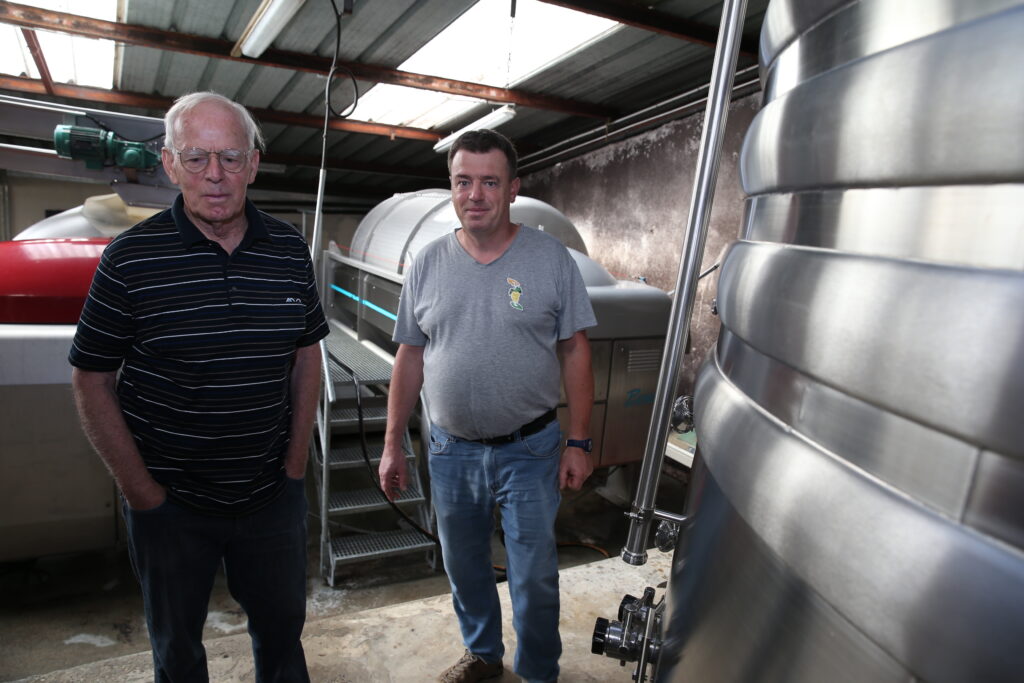
More importantly, he was one of those wine people you could really sit down with and talk about terroir, from the specific soils to the just as specific grapes he grew where, and why. At the winery, they pull out rocks from each of their vineyard sites and show you clearly in a map which is found where. You’d have to be fairly asleep to not understand later what it is you are tasting and why. Relative to their grapes, an illuminating example of the Dirler attention to detail is given by the different kinds of Muscat varieties the winery grows and makes wine with. Unlike at most other wineries all over the world where even the owner or winemaker often has a very hazy understanding of which Muscat variety he or she happens to be making wine from, not so with Jean-Pierre. He knew and could tell me, precisely, which Muscat variety was present in his Muscat bottlings in each vintage, and/or their percentage (Alsace grows mostly two Muscat varieties: Muscat d’Alsace, better known the world-over as Moscato Bianco or Muscat Canelli, and Muscat Ottonnel; the two have very different viticultural behaviours and give very different wines, so knowing which is which is not at all an act of intellectual flight of fancy but very useful information to have). But with Dirler, terroir was all-encompassing: it was never just a matter of a “Muscat” wine, as you could also clearly understand the Saering and the Spiegel grand crus just by tasting and studying the winery’s two Muscat bottlings from each respective grand cru. And unlike many others in Alsace who uprooted all their Sylvaner wines just because the grape was not allowed to be labeled as a grand cru wine (with one later amendment and exception, that of the Zoztenberg) because of an Alsace wine law that is just plain wrong and inadequate (and therefore penalizes the financial potential of wineries who wish to make and sell Sylvaner wine in the region: so just guess what happens to those poor old vines, most of the time), he not only took care of the grape, but also made some rather amazing Sylvaner wines that age remarkably well. (Over the years, I have written up many different vertical tastings of all the Dirler-Cadé wines, first at Stephen Tanzer’s International Wine Cellar and then Vinous and now at the TerroirSense Wine Review. Three such vertical tasting reports devoted to Muscat and Riesling wines are at: terroirsense.com/en/: Dirler-Cade Riesling Grand Cru Saering vertical 1990-2019 – TerroirSense Wine Review ; Dirler-Cade Muscat Saering Vertical 1997-2017: Twenty Years and Counting… – TerroirSense Wine Review; Another 30 Years and Counting: Dirler-Cade Muscat Spiegel Vertical 1987-2017 – TerroirSense Wine Review).
Forever to his credit, Jean-Pierre instilled his love of the land and wine grapes to his son Jean, who started his own path at the domaine in 1997, and has taken to carefully producing even more wines from specific lieux-dits and grand crus. For a while, the estate made not just one Sylvaner, but two, so as to highlight the old vines of the Heisse Wanne section of the Kessler grand cru: and just the fact the Dirler family will talk to you about the Heisse Wanne, when practically nobody else does. At the time of the official naming and delimitation of the Alsace grand crus, the Heisse Wanne was conveniently included within the larger boundaries of the Kessler grand cru, but it is the Heisse Wanne that locals always considered the best part of that stretch of land. Clearly, if you don’t talk to the Dirler clan, that’s something you’ll never know, unless you like to read old books and vineyard accounts of a time long gone by in dusty old book shops, town hall archives, and libraries. This is but one example -there are many more- of how a visit at the Dirler-Cadé estate provides much more than just a chance to taste good wine, but also a chance to learn and grow.
Jean-Pierre was always generally curious to know what I thought of his wines and which I liked best. Like everyone, he had his ideas and preferences, but was always much too gracious and polite to let me know he may or may not have not agreed with my views. For sure, I never passed on the opportunity to taste some of his older vintages of Muscat, Riesling and Sylvaner wines, which Jean-Pierre was always very generous in sharing (I am sure with others too). My impression was and is, and all other accounts confirm it, that he greatly enjoyed the company of others and spending time with all those who loved wine.
I asked which of the estate’s wines from recent vintages Jean-Pierre Dirler liked best. His favourite wines were the Riesling Grand Cru Kessler Heisse Wanne 2020, the Muscat Grand Cru Saering 2018, the Gewurztraminer Grand Cru Saering 2018, the Gewurztraminer 2015 Grand Cru Kitterlé and perhaps most of all, the Riesling Grand Cru Spiegel 2017.
The Spiegel, indeed. If you know and love Alsace, then you also know spiegel means mirror.
At some wineries you do little more than make small talk, taste the wines, and move on to the next appointment: at others, you share a kindred spirit; you share the same looking glass through which to gaze at the world; and you learn something about the region, the specific areas, the grapes. You even learn something about yourself. In my years visiting the Dirler-Cadé estate, in getting to know Jean-Pierre and his lovely family, I know that happened to me.
For there are souls you mirror yourself in.
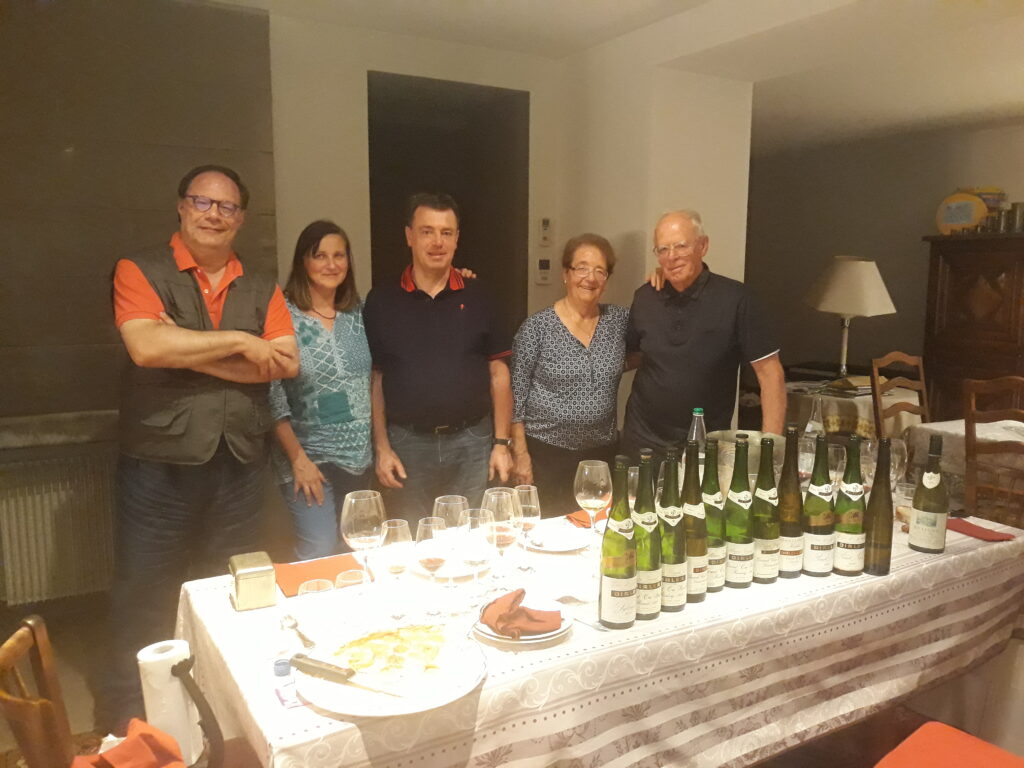
+++++++++++++++++++++++++++++++++++++++
Jean-Pierre Dirler was born on January 14, 1940 in Bergholtz, Alsace, the same town his Dirler-Cadé winery is located in.
The family winery was founded in 1871 by Jean: Jean-Pierre was the fourth Dirler generation to work at the domaine. He made his first wine in 1959, but his wine career was initially cut short by being forced to take part in the Franco-Algerian war, an experience that marked him greatly. After the war ended, he returned to his beloved Dirler domaine and vineyards making wine again, starting in 1962 and marrying Marthe in 1967. Over the years he propelled his family estate to great success and numerous accolades; success and accolades his son Jean, the fifth generation to work at the estate, has continued to build on after Jean-Pierre’s official retirement. (It was in 2000, when Jean’s wife Ludivine, née Hell-Cadé, inherited her family’s vineyards that the Dirler estate officially changed name to that of today, Dirler-Cadé.)
Besides a top-notch winemaker, Jean-Pierre Dirler always kept busy: a member of the town’s municipal council for eighteen years, a past-President of the Bergholtz Syndicat Viticole (the local wine producers association) and of the Guebwiller sub-region, an administrator at the Banque Populaire and an active member of the local chapter of the Lions Club.
Jean-Pierre is survived by his wife Marthe, their two children Anne-Marie and Jean (and Anne-Marie’s husband Yann), and the grand-children: Anne-Marie and Yann’s three (Florence, Héloïse and Isaure) and Jean and Ludivine’s three (Luc, Cécile and Mathilde).

 English
English
